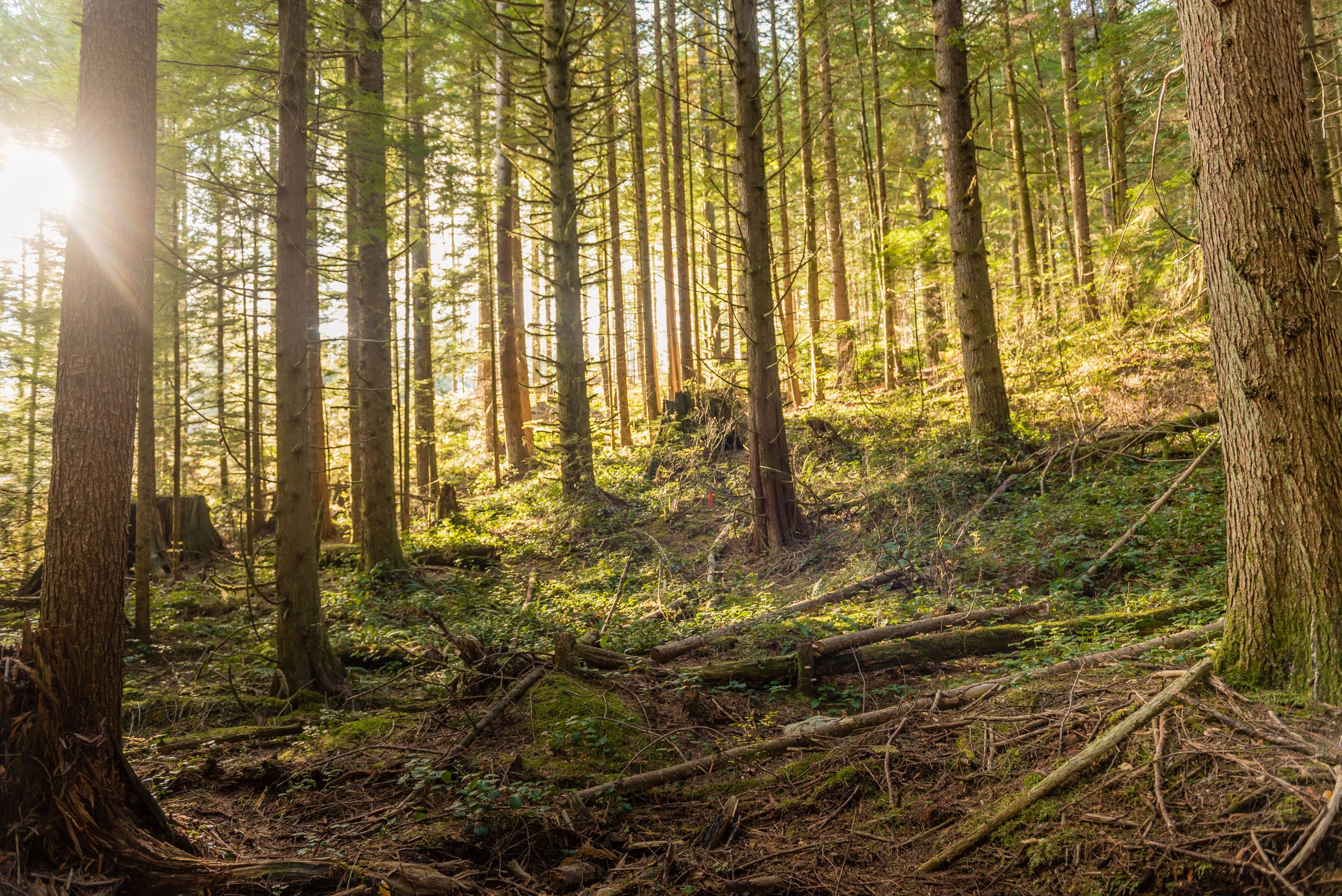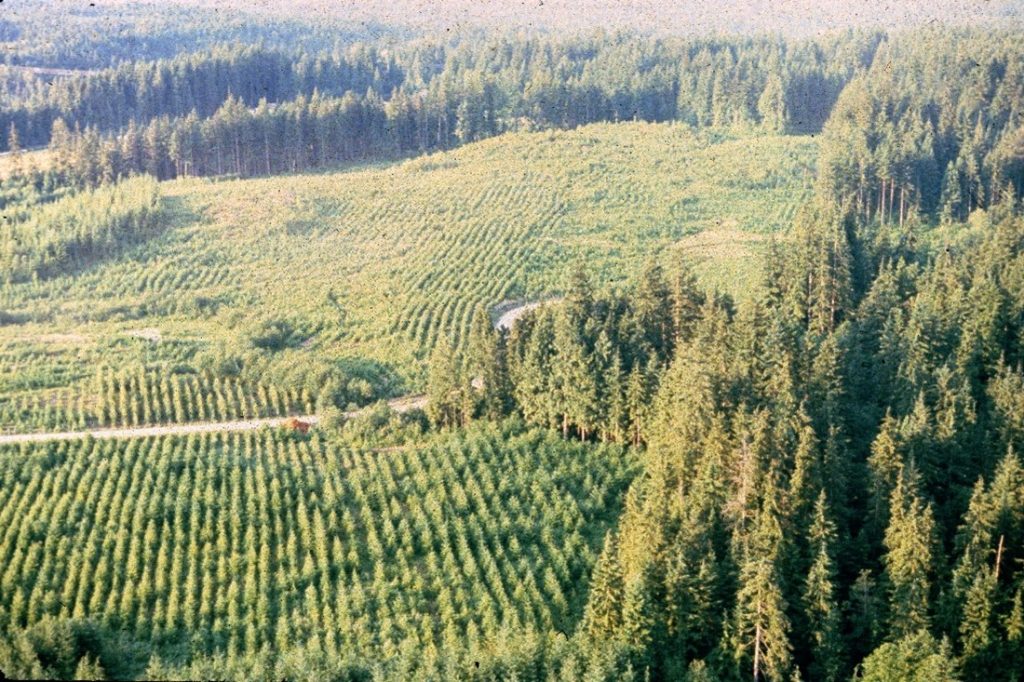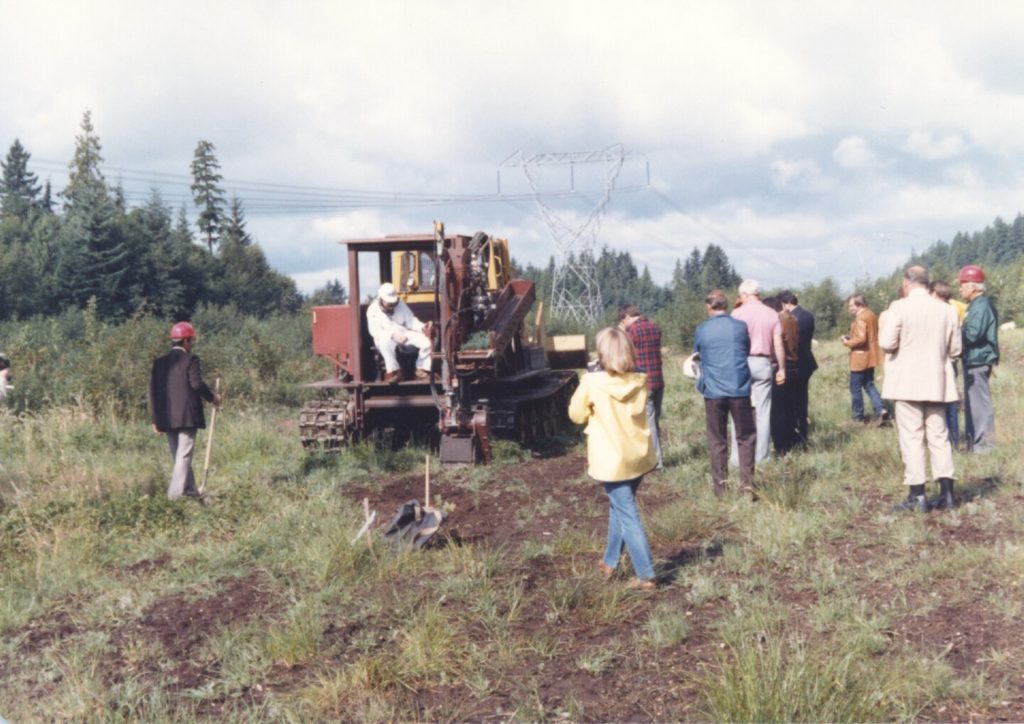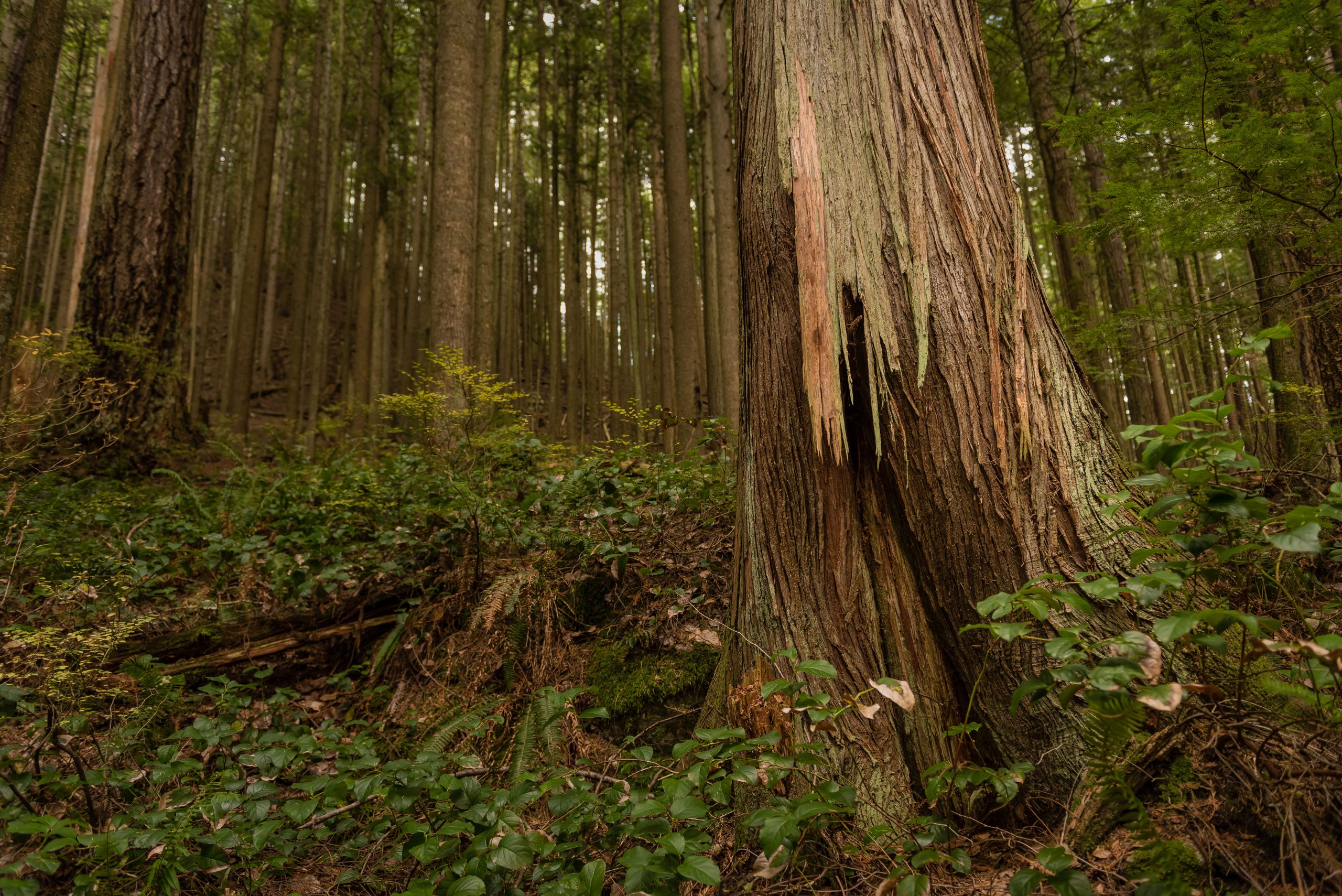THE KANTELBERG TRIALS: EXPLORING NEW FRONTIERS IN FORESTRY

In response to the urgent need for sustainable forest management practices, the University of British Columbia’s Faculty of Forestry is embarking on a series of field-based experiments to explore the benefits of variable retention and cutting-edge equipment. Led by esteemed forestry experts Dr. Suzanne Simard and Dr. Dominik Roeser, The Kantelberg Trials represent a step forward in addressing biodiversity and carbon deficits in industrialized conifer plantations.
With the aim of restoring ecological balance and enhancing carbon sequestration, these trials explore innovative variable retention alternatives to traditional clearcut logging helping to diversify forest management practices in BC.
The Trials
At the Malcolm Knapp Research Forest (MKRF), the research project is taking place across more than 30 hectares of coastal Douglas-fir plantations established in the 1960s and early 1970s. During this era, the silvicultural practices, including seed collections, seedling nurseries, and tree planting, were not like today. Availability of seedlings, other than Douglas-fir were limited, and researchers and foresters envisioned more intensive silviculture practices intended to maximize volume yield and economic returns. “This led to monocultures of Douglas-fir in ecosystems and site conditions that historically included mixtures of species, such as western redcedar, big leaf maple, and western hemlock,” says Hélène Marcoux, Registered Professional Foresters Manager at MKRF. “The research project aims to help transition these stands to future healthier forests with greater species, age, and size class diversity.” It will test a range of tree retention levels and patters, as well as and different forest operational approaches – a combination of whole-tree harvesting systems and cut-to-length harvesting systems, more commonly used in Europe.
Embracing Innovation
One of the key objectives of the research project is to investigate the integration of innovative equipment and operational practices, to demonstrate the feasibility and effectiveness of alternative logging techniques that prioritize forest health and ecological resilience. This will contribute to setting a new standard for sustainable forestry practices and will represent one of the first attempts to restore biodiversity and carbon stocks in industrial plantations in BC.

“The forest sector in BC is undergoing a rapid transformation and new holistic solutions are needed to address the many challenges forest managers are faced with today,” says Dominik Roeser, Associate Dean, Research Forests & Community Outreach.” This research project is critical to help us expand our forest management and silviculture approaches to further enhance all the different values our forest ecosystems are providing to society in terms of carbon storage, biodiversity, recreation and economic benefits.
Protecting Forest Health
At the heart of the research project lies the preservation of large trees and the revitalization of understory plant communities. Using equipment originally developed in Europe, the trials aim to minimize forest floor disturbance and safeguard critical habitat for diverse flora and fauna while maintaining economic sustainability.
The research project builds upon the foundational insights of Dr. Suzanne Simard’s Mother Tree Project, which highlighted the ecological significance of overstory tree retention. Through fine-tuning variable retention silviculture systems tailored to local conditions, the trials aim to achieve multiple objectives.
Drawing upon past research successes, the research project represents a crucial step forward in reconciling forestry practices with ecological imperatives.
Research Legacies of the Past

Many of these 50–70-year-old coastal Douglas-fir plantations at the MKRF were part of cutting-edge forestry work at the time. Every student enrolled at the faculty of forestry in the 1970s and 80s were familiar with Jack Walters (Director of the MKRF from 1968-1985) planting machines – automated planting systems that used planting “bullets” that contained seedling roots which were deployed in the soil with “planting guns” mounted on tractors and mechanized planting machines. Although Jack Walter’s vision of mechanized tree planting never garnered commercial success, his concept of containerized “bullets” was adopted by the silviculture industry – and led to the birth of today’s seedlings “plugs” used in annual planting of over 300 million seedlings in BC.
Inviting Public Engagement
As the research project unfolds, the Malcolm Knapp Research Forest invites the public to join in witnessing the future of forestry. A public tour titled From No Growth to Old Growth will be held at the Malcolm Knapp Research Forest on April 6. Led by forestry experts, this tour promises an immersive experience into the world of sustainable forest management, offering participants the opportunity to gain insights into the techniques being employed and the ecological significance of the trials. The public can register for the From No Growth to Old Growth tour here.

The research project represents a pivotal moment in the journey towards sustainable forest management. By embracing innovation, collaboration, and ecological stewardship, these trials exemplify the University of British Columbia’s commitment to shaping the future of forestry for generations to come. As we explore new frontiers in forestry, the Kantelberg Trials offer hope for a more resilient and vibrant forest ecosystem, where ecological health and human well-being are intricately intertwined. Join us on this journey as we pave the way for a sustainable and thriving forest ecosystem.